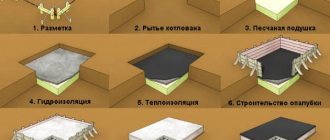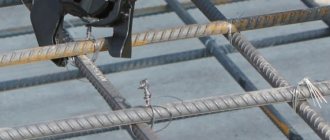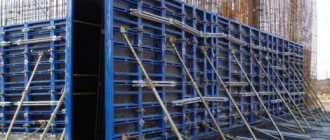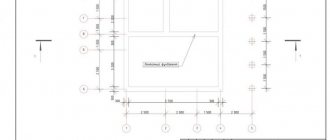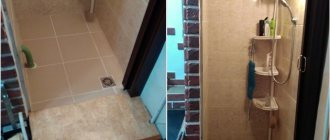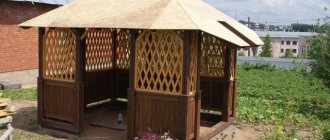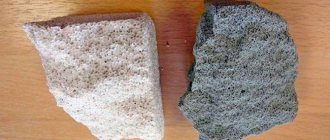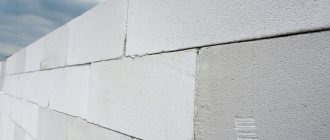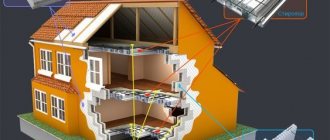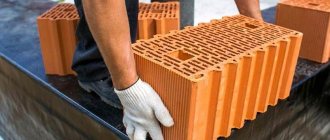IS IT POSSIBLE TO DO WITHOUT REINFORCEMENT IN THE FOUNDATION
A foundation without reinforcement turns out to be completely inappropriate if the soils at the building site have some mobility. A strip foundation without reinforcement can simply be torn apart when the earth moves.
Is it possible not to reinforce the strip foundation?
Strip foundation without reinforcement
For some types of soil, absolutely not. There is a clear example where a man decided to build a foundation on clay, in an area where most people build on stilts. As a result, its tape base was torn in several places the very next season. The reinforcement in the foundation not only strengthens the strength, but also gives elasticity.
A strip foundation without reinforcement has a reduced service life in most cases.
Is reinforcement needed in a strip foundation?
In most situations it is necessary. There is no alternative. Saving on fittings is inappropriate here. Moreover, the optimal way to fasten a reinforced frame is knitting. Using a special binding wire, you can quickly create a high-quality and durable frame. If the connections are fastened by welding, the structure of the rod is damaged. A foundation without reinforcement during the process of mandatory shrinkage, which lasts about 5 years, is highly likely to crack. Therefore, saving on frame material is unacceptable.
Is it possible to pour a foundation without reinforcement?
Technically this is quite possible and can be done many times. But you should understand exactly how reinforcement works at the base of a building or structure. It does not allow the tangential forces that develop during frost heaving to damage the integrity of the base.
This means that the foundation may not have a frame only if there is no ground movement. Otherwise it is required.
How to replace reinforcement and what's new in construction?
It would seem that what else new can be invented for the construction of housing? But you come to the next construction exhibition and never cease to be amazed at the new products. NG journalists tried to collect the most interesting things that were offered at exhibitions in Belarus.
Graphite guards heat Expanded polystyrene thermal insulation boards from the Gomelteplostroy enterprise can insulate floors, walls, ceilings and roofs of buildings. They consist of silver-gray foam with the addition of graphite, which gives the material greater density and increases its thermal insulation qualities. It is odorless and does not spread fine carcinogenic dust and fibers. It has excellent breathability, which allows the walls of houses to “breathe” and dry quickly. The price of slabs depends on their type and purpose - from 475 thousand rubles per cubic meter to 1 million 130 thousand.
By screws! Foundations on screw piles are ideal for the construction of wooden, panel and frame houses. It is erected in one day and is immediately ready to absorb loads. Piles are screwed into the ground without drilling a hole, even on difficult soils, and serve for at least 50 years. Such a foundation costs 50-70 percent less than a strip foundation.
“American” for the lawn Starting this year, lawn mowers from the American company Toro will appear in specialized stores. Depending on your needs, you can purchase one of two types of equipment: a lawn mower with a set of conventional options and super equipment with an additional option for mulching the soil. The machine, depending on the force applied to the mower handle, itself changes the speed and intensity of mowing the grass. This equipment costs 400-500 dollars.
Plastic rod A completely new, unusual product - plastic reinforcement - was presented by the Brest research and production company Business Continent. These domestic products, produced using foreign technology, can replace metal reinforcement in reinforced concrete products,” said manager Anatoly Savchuk. - Predicted durability - at least 80 years. Glass-plastic reinforcement can be used for low-rise, up to three floors, construction. The indisputable advantage of fiberglass is that it does not rust, does not interact with acids and alkalis, is four times stronger than metal and nine times lighter. Saves twice as much compared to metal. This is a godsend for individual construction. Such fittings can also be used as a decorative element. The limitation is due to the fact that all the necessary technical documentation for the new product has not yet been collected and tests have not been carried out. One linear meter of such glass-plastic costs only three thousand rubles.
IS IT POSSIBLE TO PLACE A FOUNDATION BY FILLING WITH SCRAP METAL SOLUTION WITHOUT REINFORCEMENT
Is it possible to make a foundation without reinforcement and replace it with another metal?
Scrap metal in the foundation
This is acceptable for outbuildings or small structures such as a fence. But you can’t make a foundation like this for a residential building.
Some experts point to old experiments when there was no reinforcement and the foundation was poured using whatever was at hand, including simple scrap metal. But this is a completely wrong approach to focus on outdated work methods. Therefore, scrap metal can only be used for small foundations on relatively stable soils.
Foundation without reinforcement with stones
The foundation is an integral part of the building that serves as support for the walls of the building. The construction of any building begins with pouring the foundation.
A bathhouse, a country house, a residential building - for all objects it is necessary to create a solid foundation on which the building will stand for a long time.
Most craftsmen advise reinforcing the foundations for any buildings, which increases the cost of construction.
Is it possible to lay a foundation by filling scrap metal with mortar without reinforcement? Foundation without reinforcement
FoundationFoundation without reinforcement
The foundation is an integral part of the building that serves as support for the walls of the building. The construction of any building begins with pouring the foundation.
A bathhouse, a country house, a residential building - for all objects it is necessary to create a solid foundation on which the building will stand for a long time.
Most craftsmen advise reinforcing the foundations for any buildings, which increases the cost of construction.
BAND MONOLITHIC FOUNDATION WITHOUT REINFORCEMENT
Is it necessary to reinforce a strip foundation?
Strip foundation without reinforcement
It all depends on the initial technical indicators. If you begin to reinforce the base, then there are no questions. But if you decide to create a special foundation without reinforcement, then you should carefully study the underlying soils and their dynamics over the seasons. You also need to know exactly the technical indicators of the future home and the corresponding requirements for the foundation. Only after this can you answer whether the foundation needs to be reinforced or whether there are grounds for taking risks and introducing new technology. The choice is individual in each case.
How to properly reinforce a foundation with your own hands
In this article we give detailed step-by-step instructions for reinforcing the foundation with your own hands. We talk about creating various types of foundations: strip, monolithic and columnar. We also show how to correctly calculate the required amount of reinforcement for construction.
Types of fittings
Traditionally, for the construction of concrete foundations, corrugated steel reinforcement (for the main frame) and smooth steel reinforcement (for organizing lintels) are used. However, you can also find a new type of rods on the market - fiberglass reinforcement, which is characterized by greater strength and increased durability.
However, professional builders recommend using conventional steel reinforcement to create classic reinforced concrete foundations. This is due to the novelty of fiberglass rods - it has not yet been fully studied exactly how they will behave in conjunction with concrete under different weight loads on the foundation.
Reinforcement of strip foundation
The strip foundation type is one of the most common and popular when it comes to building private houses on summer cottages. Below we show how to properly make a frame from rods to reinforce a strip foundation.
Such a foundation is not solid, but consists of long reinforced concrete strips with a rectangular cross-section. Initially, wooden formwork is installed where concrete is poured. The most common dimensions for it are: the height of the wooden sides is up to 100 cm and the width between them is up to 50 cm. The result is a strong, medium-depth foundation.
Next you need to assemble the reinforcement frame. It consists of several types of rods:
When the belt height is up to 100 mm, a frame is traditionally created from two belts of longitudinal reinforcement: upper and lower, which are connected by vertical and horizontal jumpers. This design simultaneously compensates for the heaving of the earth from below and the pressure of the house from above. Foundations of greater height are built much less frequently, and they require the installation of three or more belts.
So, let's consider a detailed diagram of the reinforcement of a foundation with a strip structure. First, a pair of lower longitudinal bars are laid: in such a way that the distance from the ground and the sides of the formwork is at least 5 mm on each side (special legs or supports made of bricks are used to lift the reinforcement above the ground).
Next, vertical posts of the required height are installed - at a distance of at least 30 cm from each other. The upper belt of longitudinal reinforcement is attached to them, after which both belts are supplemented with horizontal jumpers to increase rigidity - they are installed at a distance of no more than 40 cm from each other. All joints of longitudinal, vertical and horizontal rods are fixed with binding wire: you can use either regular smooth or more reliable VR-1 steel wire with a relief surface 3-4 mm thick.
Particular attention should be paid to the adjacent walls and corners of the foundation, since they bear the heaviest load. These sections are further strengthened either by overlapping longitudinal bars on each other, or by using a separate L-shaped clamp made of corrugated reinforcement of the same diameter. The length of the overlap or clamp on each side of the corner must be at least 50 cm. A detailed diagram of strengthening the corners of the foundation is shown in the lower drawing.
Scrap metal and stones instead of fittings
When you decide to reinforce the foundation, but still want to save money, use stones and scrap metal instead of reinforcement. The strengthening method is suitable only for outbuildings (barn, barn, garage) and on very inactive soil.
It is absolutely impossible to build a residential building on such a foundation. The main task when using such “reinforcement” is its competent, uniform distribution throughout the volume of the concrete mixture.
To improve adhesion to concrete, the reinforcement has a special ribbed surface, longitudinal and transverse protrusions; it is extremely strong and provides the foundation with resistance to tension and compression. Boulders, scrap metal and substandard bricks do not have such properties, so they cannot be considered a full replacement for reinforcing bars.
If you decide to make a foundation for a small-sized structure, you should not run to the store and buy expensive fittings. Metal products are suitable instead:
- Used corners;
- Used channels;
- Thick wire, various metal objects.
Of course, not any metal will replace fittings, but only high-quality metal, without visible signs of corrosion and rust.
Disadvantages of fiberglass reinforcement
In addition to their advantages, plastic reinforcing materials also have their disadvantages. In this regard it must be said that:
- A composite rod cannot be bent with a small bending radius. Therefore, in corners and junction areas it is necessary to use special bent factory-made elements.
- Plastic rods cannot be welded if the need arises. They are only knitted (knitting is described in more detail here) and, at certain moments, this can create inconvenience.
- Polymer materials are not able to withstand heating above 80-100˚C. Therefore, after a fire, when the building itself remains intact, reinforced structures may lose their reliability, which does not happen with metal.
